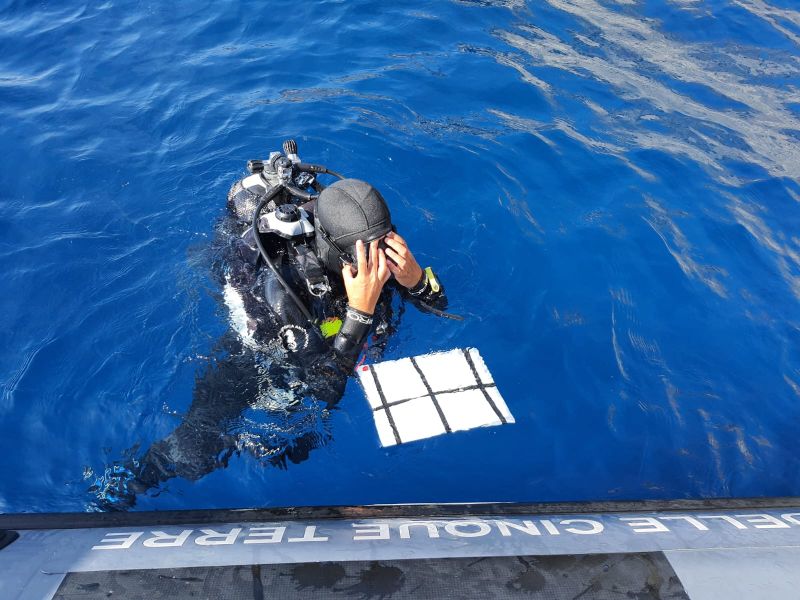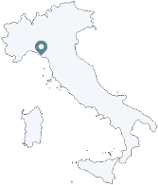- Decrees and Regulations
- Notices and Calls
- ECST Phase I
- Travel Suggestions
- Online documents
Home » Nature » Cinque Terre Marine Protected Area » Monitoring and Scientific Research
Reserve Effect Assessment
Method and sampling plan for fish fauna in the Cinque Terre Marine Protected Area, aimed at assessing the reserve effect
By the researchers of the Anton Dohrn Zoological Station
The assessment of the so-called "reserve effect" (ER) consists in studying the potential increase in density, size and/or biomass of fish species (especially target species of professional and recreational/sport fishing) within the Cinque Terre Marine Protected Area, comparison with external control areas.
The fishing target species are those that respond most clearly to the protection regimes. The Reserve Effect on fish fauna is unanimously considered the best performing indicator to assess the bio-ecological effectiveness of marine areas.
Coastal fish fauna associated with intertidal rocky bottoms (used as an international standard for the evaluation of RE in MPAs) will be sampled during two campaigns.
Sampling will be carried out by collecting data in situ (i.e., by diving with ABA) on the density of the species and the size of the individuals surveyed.
The size data will also allow the estimation of fish biomass based on size-weight relationships available in the literature. Taken together, these data will make it possible to compare densities, biomass, and size distributions (particularly of target species for fishing: dusky grouper, seabreams and corb) within the MPA (in the different zones A, B and C) and outside its boundaries.
Planned activities for 2022
Fish fauna will be sampled without any harvesting or damage. To this end, a visual census technique will be used, specifically involving the execution of 25x5 m transects (sampling area: 125 m2), suitably replicated in space. The application of this technique for surveying the density and size of fish species will be conducted according to a standardised approach to make the data of the Cinque Terre MPA comparable not only with the surveys conducted in the past, but also for comparison with other Italian and Mediterranean MPAs.
As far as the sampling plan is concerned, surveys will be conducted in zones A, B, C and outside the MPA, following a gradient of fishing impact (from a total ban in zone A to fully open fishing, according to current regulations, outside the MPA, passing through zones B and C where professional and recreational/sport fishing are more strictly regulated than outside).
Sampling will be carried out at two locations in zone A (Mesco-A and Montenero-A), two in zone B (Mesco-B and Montenero-B), two in zone C (Corniglia-Manarola and Montenero-C) and two outside the MPA (Bonassola and Monasteroli).
At each location four transects (sampling units) will be conducted at two bathymetric levels between approximately 5 and 15-20 m, at two sites (spaced tens of hundreds of metres apart) for each location. This implies that a total of 16 sites will be sampled for a total of 256 transects, considering the two campaigns.
Expected results
Such a sampling plan is appropriate for fully satisfying the purposes of assessing the reserve effect, as it includes several potential sources of variability (temporal over the two sampling times, spatial over several scales and linked to bathymetry), which will be appropriately assessed so as to be "distilled" with respect to the source of variability of great interest, i.e., that linked to the protection different level (zone A, B, C, and outside).
The data, their analysis and interpretation will be made available to the MPA both in excel format and via a final summary report.
© 2024 Parco Nazionale delle Cinque Terre
Via Discovolo snc - c/o Stazione Manarola
19017 Riomaggiore (SP) - CF 01094790118
Tel. +39 0187/762600 - Fax +39 0187/760040
Tourist information: infopoint@parconazionale5terre.it
PEC: pec@pec.parconazionale5terre.it
19017 Riomaggiore (SP) - CF 01094790118
Tel. +39 0187/762600 - Fax +39 0187/760040
Tourist information: infopoint@parconazionale5terre.it
PEC: pec@pec.parconazionale5terre.it







